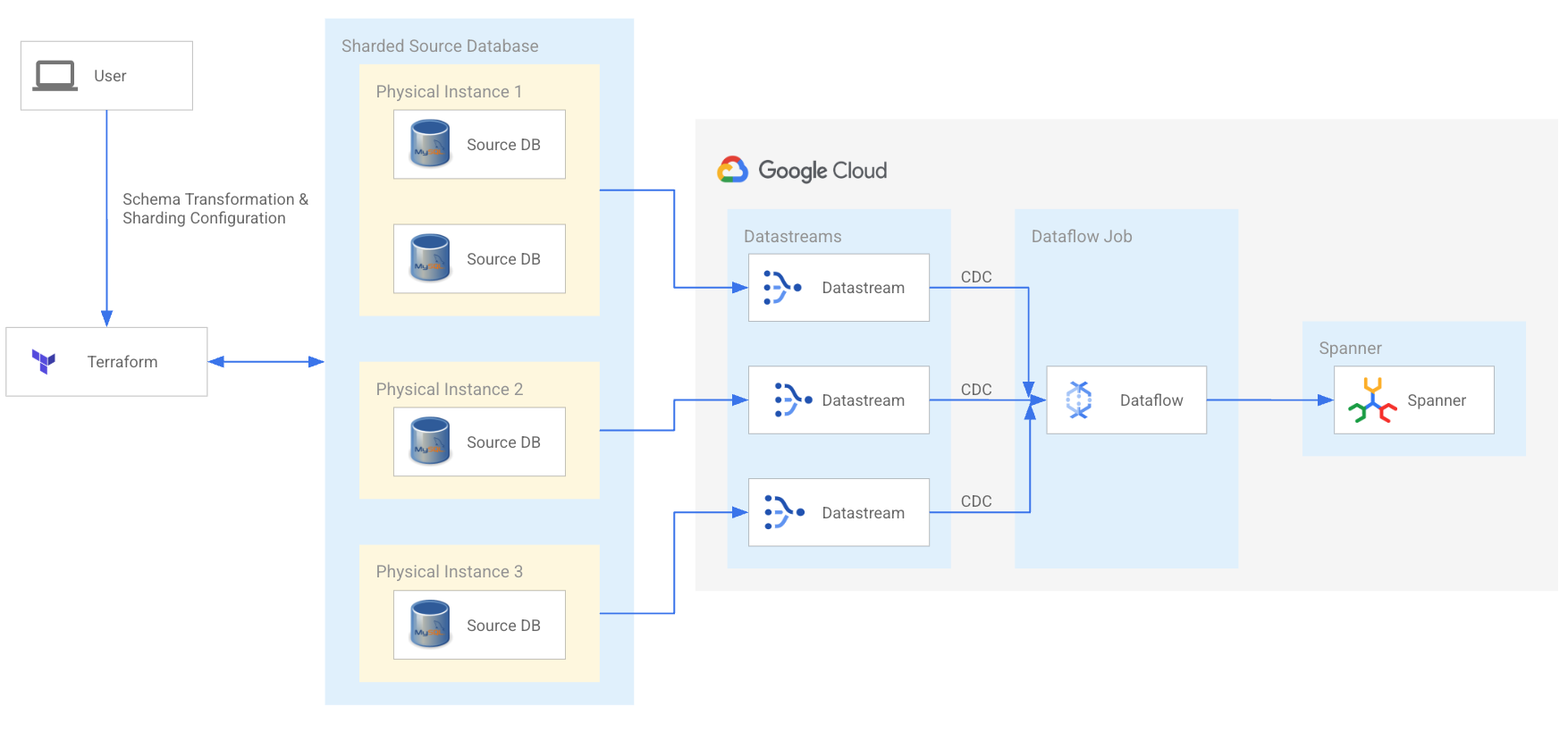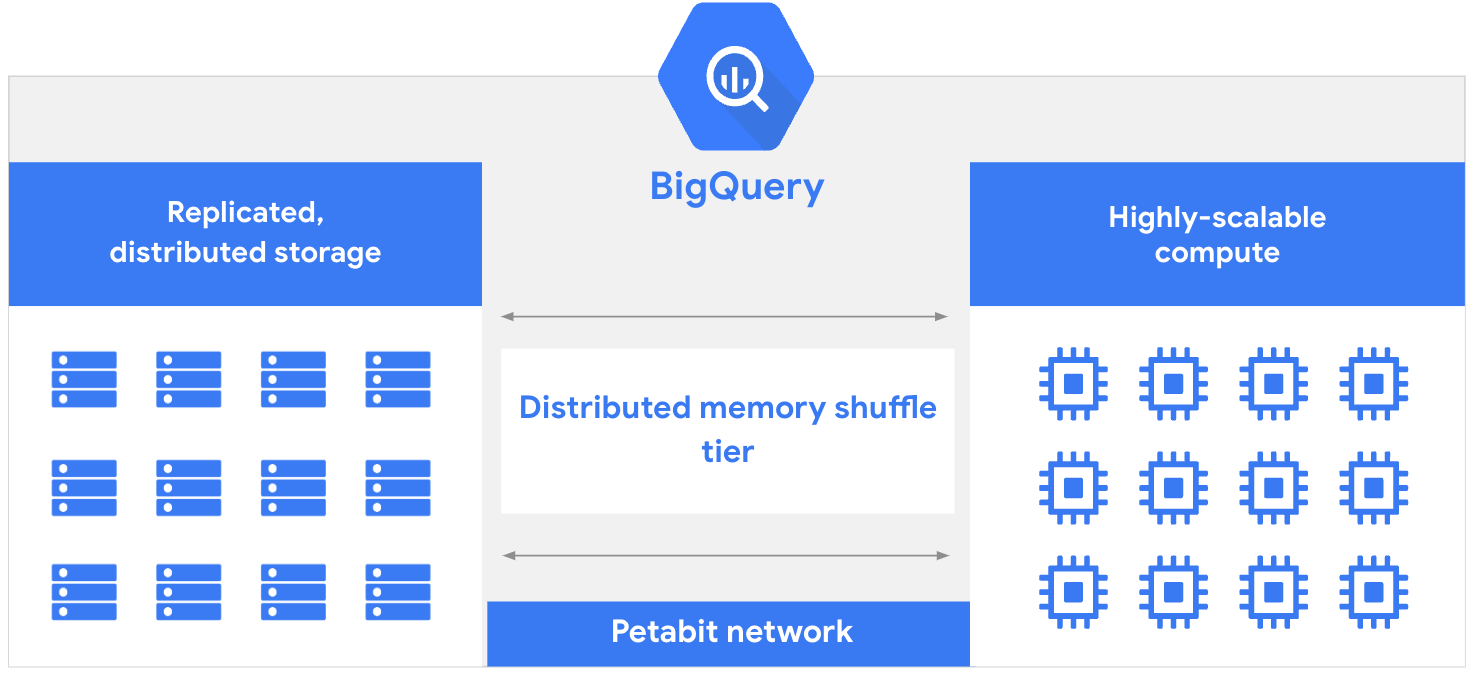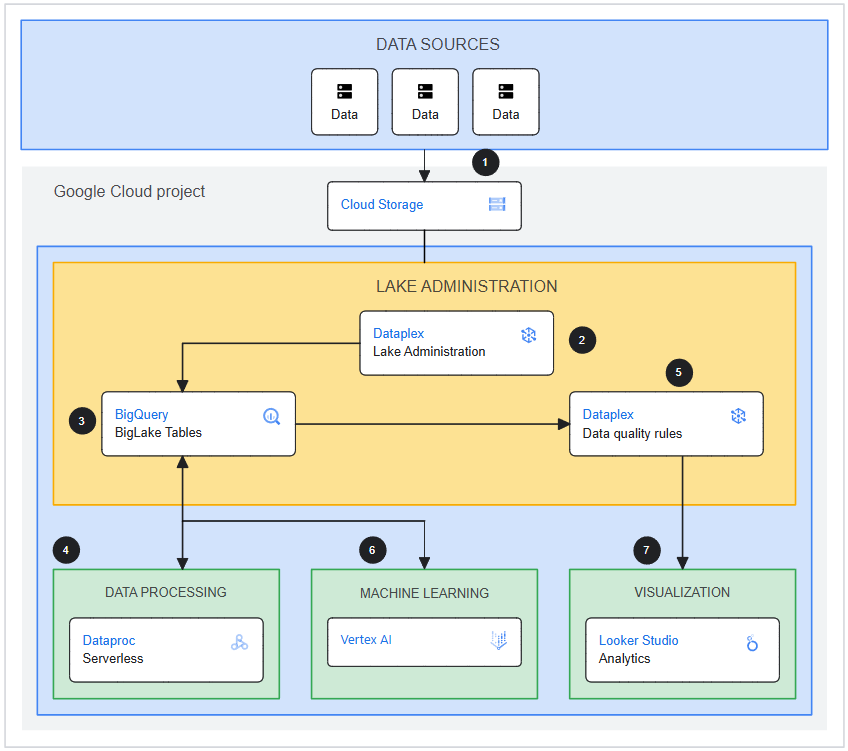Analytics
Cloud Spanner
Databases organize structured data for easy access and management. When many users or locations need simultaneous access, the database must scale automatically.
Cloud Spanner combines traditional database structure with the ability to grow without limits.
- Fully managed, no server maintenance needed
- Ensures high availability and strong consistency
- Ideal for globally distributed applications

BigQuery
For analytics, data is collected and structured in a central system called data warehouses. Data warehouses are like central hubs, collecting and organizing data to make insights faster and easier.
BigQuery is GCP’s serverless data warehouse for large-scale analytics.
- Runs complex queries on huge datasets
- Scales automatically based on workload
BigQuery turns large amounts of structured data into actionable insights with minimal setup. It works alongside Cloud SQL but is optimized for large-scale queries, letting you focus on insights instead of setup.

GCP can also be integrated with Looker for visualizations and dashboards, making it easier to turn data into clear insights and actionable decisions.

Data Lake
Unlike traditional data warehouses, a GCP data lake uses a modular architecture of integrated, serverless services to manage data at any scale and enable real-time and batch analytics.
- Handles structured, semi-structured, and unstructured data
- Stores raw data from multiple sources at scale
- Supports big data analytics and machine learning
BigLake can link data warehouses and lakes with BigQuery without moving or duplicating the data.
- Provides unified access to all data types
- Allows large-scale queries for structured/unstructured data
Together, data lakes and BigLake let organizations store and analyze all their data efficiently in one platform.
